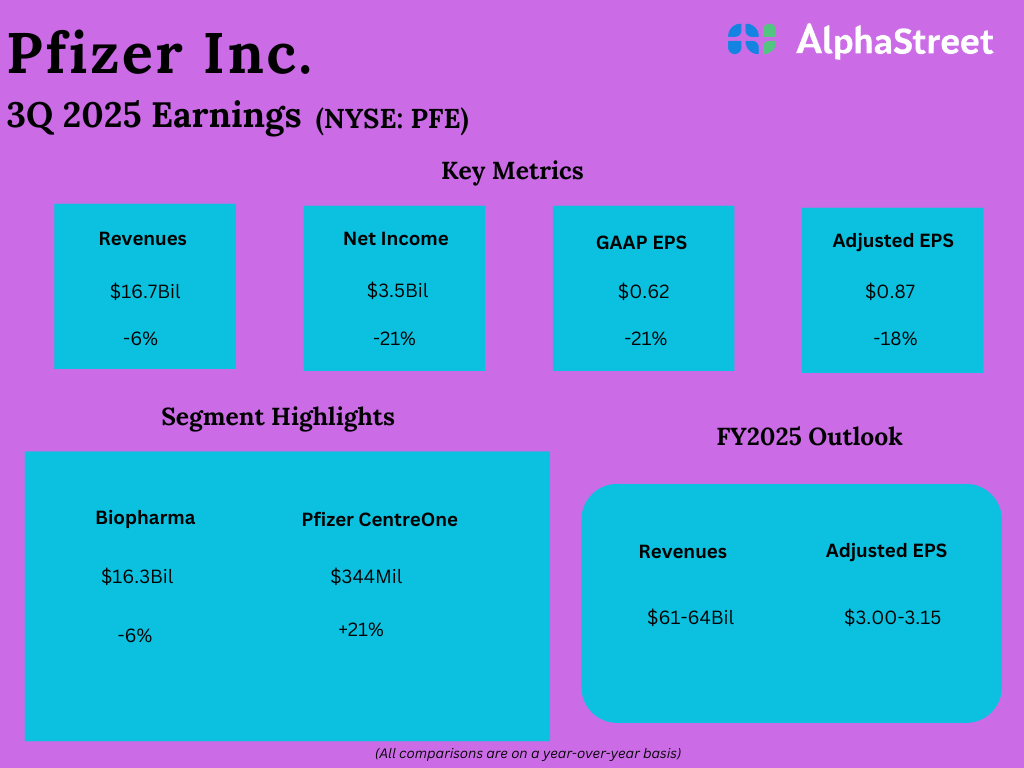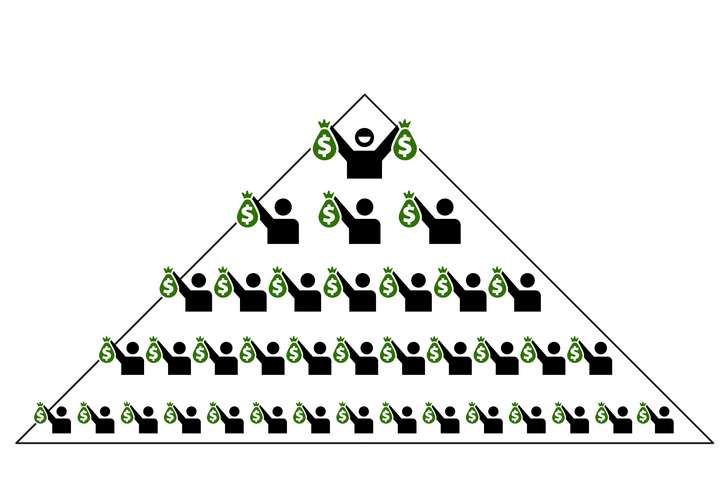Corporate America is getting rocked by historic rounds of white-collar layoffs, leading some to wonder: Has AI finally come for their jobs?
While the proliferation of generative and agentic artificial intelligence is playing a role, recent job cut announcements from companies like Amazon, UPS and Target are about a lot more than just the advance of new technology.
The firms, which each announced layoffs in recent weeks totaling more than 60,000 roles eliminated this year, said they’re trying to cut corporate bloat, streamline operations and adjust to new business models.
But in the absence of the Bureau of Labor Statistics’ monthly jobs report, which has gone dark amid the government shutdown, the layoff announcements have raised questions about the strength of the labor market and if it’s the start of an AI-driven, white-collar recession.
Some companies have outright said they’re replacing workers with AI. Klarna CEO Sebastian Siemiatkowski said in May the company was able to shrink its head count by about 40%, in part because of AI. Duolingo said in April it’ll stop using contractors for work that AI can handle. Salesforce laid off 4,000 customer support roles in September, saying that AI can do 50% of the work at the company.
But experts interviewed by CNBC said some companies could be “AI-washing” their job cuts, blaming layoffs on the new technology to cover up business fumbles and old-fashioned cost cutting.
“We spend a lot of time looking carefully at companies that are actually trying to implement AI, and there’s very little evidence that it cuts jobs anywhere near like the level that we’re talking about. In most cases, it doesn’t cut head count at all,” said Peter Cappelli, a professor of management at the Wharton School and director of its Center for Human Resources. “Using AI and introducing it to save jobs turns out to be an enormously complicated and time-consuming exercise. … There’s still a perception that it’s simple and easy and cheap to do, and it’s really not.”
Still, the cuts, which come after a string of layoffs across the tech industry, have cast a dark cloud on a teetering economy that’s been wracked by persistent inflation, rising delinquencies, falling consumer sentiment and an average effective tariff rate that’s at its highest level in nearly a century, according to estimates from The Budget Lab at Yale University.
The growing pile of bad news has done little to shock the stock market, which is at near-record highs, but that’s largely because it’s been buoyed in part by AI megacaps.
Cappelli attributed the recent surge in layoff announcements to concerns about the state of the economy. He also noted a likely “bandwagon” effect in which companies see their competitors cutting so they too start making cuts.
“If it looks like everybody is cutting, then you say, ‘They must know something we don’t know,'” said Cappelli. He added investors often reward cutting: “They want to hear that you’re cutting because it looks like you’re doing something good. It looks like becoming more efficient.”
To be sure, AI and automation are potentially enabling some of the cuts, and the emerging technology is poised to help all companies reduce costs and boost efficiency in the coming years. But the reasons behind each layoff and the role AI is playing are nuanced, and vary company by company.
Starbucks’ decision to cut around 2,000 corporate jobs in two rounds this year is related to slowing sales at the company and a larger turnaround effort led by its new CEO, Brian Niccol. Layoffs at Meta’s AI unit, which impacted around 600 jobs, came as the company said it wants to operate more nimbly and reduce layers. Intel’s decision to lay off about 15% of its workforce came after it overinvested in chip manufacturing without adequate demand.
Together, they represent what John Challenger, CEO of job placement firm Challenger, Gray & Christmas, described as a turning point in the economy and job market.
“We were in this no-hire, no-fire, type of zone. Economy was moving ahead. The labor markets were feeling pressure, but certainly, unemployment had stayed relatively strong,” he said. “These job cuts do suggest that the dam may be breaking as the economy slows.”
The earliest signals, he said, could be coming from retail, shipping and distribution.
The world’s largest startup
During the Covid-19 pandemic, Amazon went on a hiring spree in part to meet a surge in demand for e-commerce and cloud computing services, leading its corporate and front-line workforces to more than double to 1.3 million employees between 2019 and 2020.
By 2021, the company had swelled to 1.6 million employees globally, the same year Andy Jassy succeeded Jeff Bezos as CEO.
Since taking over, Jassy has been trying to undo some of that work.
Last week’s layoff announcement, impacting 14,000 corporate jobs, is expected to be the largest in the company’s history and to affect nearly every unit in the company. It marks Amazon’s second round of layoffs in three years and amounts to more than 41,000 corporate job cuts since 2022, with more potentially on the way come 2026.
Though AI is part of the picture, there’s more at work behind the reductions.
Jassy said in the days following the announcement that the changes were neither AI nor financially driven, but were instead to cut corporate fat so the company can operate as the world’s largest startup.
Amazon said it’s not replacing workers with AI, at least not yet, but it does need to cut employees so it can invest in the technology. As those costs come down, Amazon has earmarked hefty investments in cloud infrastructure to support AI workloads while simultaneously pushing out a flurry of AI services and tools across the company.
It’s contributed to a rise in capital expenditures, which are now expected to reach $125 billion this year, up from a prior forecast of $118 billion.
Jassy said previously that the company’s workforce would shrink in the future as a result of its embrace of generative AI but it still plans to keep hiring in “key strategic areas.” Over time, the company will need “fewer people doing some of the jobs that are being done today” but “more people doing other types of jobs,” Jassy said in June.
The cuts are also part of a larger goal of Jassy’s to make the company more nimble, reduce bureaucracy and remove layers so it can operate faster and smarter.
“It’s culture,” Jassy said during Amazon’s quarterly earnings call Thursday. “If you grow as fast as we did for several years, you know, the size of the businesses, the number of people, the number of locations, the types of businesses you’re in, you end up with a lot more people than what you had before, and you end up with a lot more layers.”
Smart money
In January, UPS announced a major change in its strategy.
The logistics firm said it was going to pare down its relationship with its largest customer, Amazon, in favor of higher-margin businesses that require fewer people to operate.
In fiscal 2024, Amazon shipments represented nearly 12% of revenue for UPS. The logistics giant said it was planning to reduce that volume by more than half by June because of the relatively low margins.
“This was not their ask. This was us. This was UPS taking control of our destiny,” CEO Carol Tomé told analysts in January.
In turn, UPS said it was pivoting to more profitable businesses, like health care, returns and business-to-business services and as a result, would require fewer resources.
“As we bring volume down, we will not only reduce the hours of miles associated with this volume, we will be able to take out fixed costs to match our capacity to our new expected volume levels,” finance chief Brian Dykes said in January. “We expect to close up to 10% of our building, cut back our vehicle and aircraft fleets and reduce labor.”
Last week the company said it had deepened previously planned job cuts for a total of 48,000 roles eliminated so far this year across operational employees and office workers.
In the first half of 2025, parcel volumes were down 5.4% at UPS compared with the year-ago period, according to data from ShipMatrix, and the company has been changing its corporate structure to adjust to lower volume.
The bulk of its layoffs this year, representing 34,000 operational jobs, were related to its decision to close 93 buildings – not replace people with robotics, the company said.
The 14,000 additional corporate roles it cut were partially related to AI, but the technology was not the primary driver, a spokesperson said.
Where AI and automation are expected to hit UPS most is in its future hiring plans.
As the company plans to bring automation to more of its facilities, it won’t need to hire as many people. Last week, UPS said 66% of its volume during the fourth quarter would come through automated facilities, up from 63% a year prior. That number is expected to move higher in the years ahead.
Still, that doesn’t necessarily mean those jobs are disappearing – some could be migrating from UPS to other companies, said Jason Miller, a professor of supply chain management at Michigan State University’s business school.
Miller said there’s a “reallocation” effect happening where one firm is losing business and shedding payroll — while another is gaining. The number of jobs may be the same, but the location, qualities and duties can differ, he said.
BLS data on the number of people employed in “courier” positions, which covers roles at places like UPS and Amazon, reflects that trend. As of August, courier positions were only down about 2% from their all-time high, and they’ve been on the rise over the last three years, the data shows.
When tariffs bite
Target’s announcement last month that it would be cutting 1,800 jobs, representing about 8% of its corporate workforce, is a window into both consumer spending and the retailer’s own specific challenges.
It’s Target’s first major round of layoffs in a decade and comes after four years of roughly stagnant revenue. The retailer’s incoming CEO, Michael Fiddelke, said the cuts are about reducing complexity at a company that’s seen its workforce grow faster than sales.
Unlike some of its competitors, the bulk of Target’s revenue comes from the kinds of products that are nice to have, but not necessary, such as holiday mugs, trendy sweaters and home decor.
That means when consumer spending starts to slow down, Target feels it more acutely than its rival Walmart, which earns the majority of its revenue from groceries.
Slower consumer spending has been partially to blame for a decline in Target’s performance in recent years, but the introduction of tariffs, which are pushing prices higher, could make that impact even worse.
“Buyers’ willingness to pay is staying flat, inflation is high, income isn’t going very up so firms’ ability to sort of increase price to maintain their margin is being squeezed,” said Daniel Keum, an associate professor of management at Columbia Business School, who studies labor market dynamics. “If you can’t increase price, you have to reduce cost.
“How operationally do I manage cost?” Keum added. “I mean No. 1, like, let’s lay off white-collar people.”
Outside of macroeconomic conditions, Target’s business has also suffered from a number of self-inflicted challenges. The quality of its merchandise has taken a dive, fewer staff and frequent out-of-stocks have made its stores less enjoyable to shop in, customers and insiders told CNBC earlier this year. The retailer has also struggled to manage its inventory, which has impacted its profitability.
All of these issues combined have left Target with a workforce that has grown faster than sales and a complex corporate structure that has hampered decision-making and created needless red tape.
Between fiscal 2023 and fiscal 2024, Target’s global workforce grew 6% from 415,000 employees to 440,000, but in the same time period, sales declined 0.8%, according to company filings.
“The truth is, the complexity we’ve created over time has been holding us back,” Fiddelke told Target employees in a memo when announcing the job cuts. “Too many layers and overlapping work have slowed decisions, making it harder to bring ideas to life.”
He didn’t cite AI in his memo but did say the cuts will help the company execute faster so it can better “accelerate technology.”
— CNBC’s Melissa Repko and Steve Liesman contributed to this report.




























